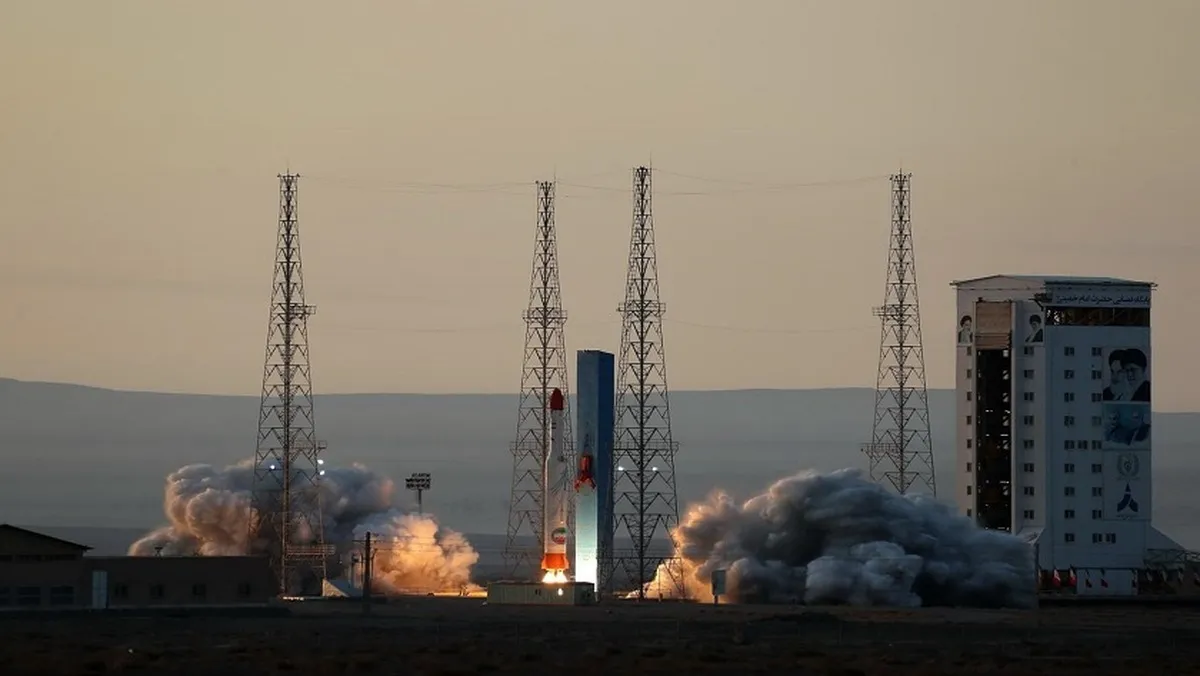Iran Launches 3 Home-Made Satellites Simultaneously into Space

The three satellites were launched from Imam Khomeini Space Launch Terminal in Semnan province in Northeastern Iran with a minimum altitude of 450 kilometers and a maximum of 1,100 kilometers above the Earth's surface.
Weighing 32 kilograms, Mahda is a research satellite designed and manufactured at the Iranian Space Research Center. It is a lightweight satellite developed to test advanced satellite subsystems.
The performance of Simorq launcher, manufactured by the Iranian Defense Ministry, is assessed by Mahda in multiple injections of space cargo in low altitudes, and the satellite also evaluate new designs and the reliability of indigenous technologies in space.
Hatef-1and Keyhan-2 are two cubic nanosatellites weighing less than 10 kilograms which have been developed by Iran Electronics Industries, a state-owned subsidiary of the Defense Ministry.
Hatef-1 seeks proving the use of narrowband communication technology in the internet of things (IoT).
Keyhan-2 has been made for space-based positioning. It has status determination and control subsystems to aim stably and precisely towards the Earth.
Iran’s Telecoms Minister Issa Zarepour said that for the first time, Simorq simultaneously put Mahda satellite and two other research payloads into orbit, adding that Mahda's signal was received.
“I congratulate this important achievement to the beloved people and space experts, specially my colleagues at the Iranian Space Research Center and the Defense Ministry,” he said.
Last week, Iran had also launched Sorayya satellite into orbit by using Qa’em 100 satellite carrier.
Iran is standing among the top 10 countries leading the space industry and among the 7 states leading the bio-space.
Iran sent its first bio-capsule containing living creatures into space in February 2010, using an Explorer (Kavoshgar) carrier.
Iran launched its first satellite, called Omid (literally meaning hope), in 2009. Rasad (literally meaning observation) satellite was also sent into orbit in 2011.
In 2012, Iran successfully put its third domestically manufactured satellite, named Navid (literally meaning promise), into orbit.
The first and most advanced homegrown remote-sensing satellite is Pars-1, which has been designed and constructed by the researchers of the Iranian Space Research Center.
Pars-1 is supposed to take pictures of all parts of the country using a high-resolution 15-meter-camera and send its photos from a 500-kilometer distance to the earth stations using a high-powered telecommunication transceiver.
4155/v





















